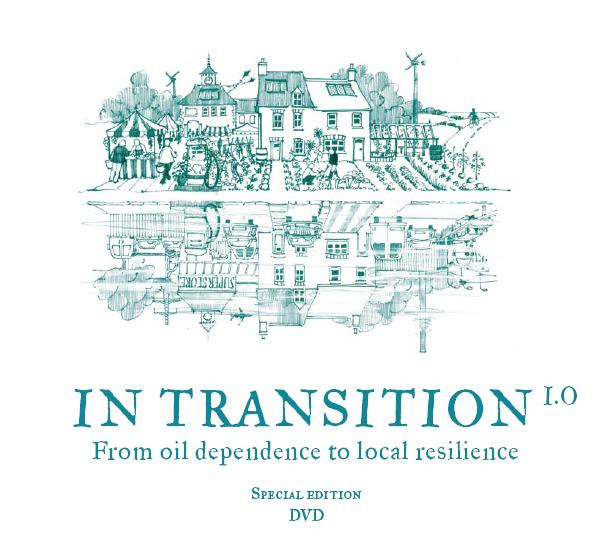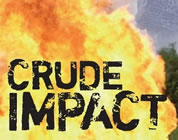Written by: Mike Mayberry
More than any other single aspect of
transition culture, I am personally motivated by the idea of becoming more self-reliant as well as building relationships within my community. In the construction of my worm bin, I would like to think that I took a step in the right direction on both counts.
Before I get into specifics, I guess I should briefly explain what a worm bin is, and why I decided it would be a good idea for me. A worm bin generally speaking is a compost bin in which worms are added to speed up the transformation of waste into fertilizer/soil. I have previously been able to keep a more traditional compost bin, but around my current apartment there is no easy place to build one. So, partially inspired by reading about the
green wizardry of John Michael Greer and friends, I decided a worm bin would be a nice fit. I looked around online for a good tutorial on building it and decided on
this one.
I bought two 8 Gallon storage tubs from Big Lots for $9.72. In hindsight, I should have purchased the tubs at a store that was locally owned so that more of my money stayed in the community, but at least they were American made, which is important to me as well.
So I brought home my two storage tubs and got to work. With a 1/8" drill bit, I drilled holes in one of the lids and along the sides of both of the bins. I then used a 3/8" drill bit and drilled holes in the bottom of both of the bins.
I learned two things in this process. Don't push hard on the drill when drilling holes in tupperware as it tended to crack in my case. I was using what was most likely a drywall bit, which may have been part of the problem. I also learned that this activity should probably be done outdoors or in a well-ventilated area because the drill bit was starting to melt the tupperware a bit from all of the friction.
So, with the holes drilled, I took shred paper from our shred bin and wetted it down then squeezed out the excess water and laid the paper at the bottom of one of the bins. In worm bin circles, the damp paper is called bedding and can be substituted/mixed with leaves, grass clippings or shredded cardboard as well as fine untreated wood scraps. The key here in my research is to find something "carbon rich" to add to the waste. I also think that I will try to stray away from paper with color ink on it or glossy pages in the future because of the chemicals that are in the paper. The same goes for the other waste that goes into the bin. When in doubt as to whether the waste items I am putting into the bin have any nasty chemicals in them I either rinse them thoroughly or I don't put them into the bin at all. If I had a bigger set up or multiple worm bins this wouldn't be as big of a concern because I could a worm/compost bin that was not for food crops that I could put more questionable items into to reduce my waste stream. The only other restriction that I have seen is that worm bins should only contain plant-based items, excluding any oils. So, no animal-based waste should go into the bin.
Once I put some waste I had accumulated into the bedding, I covered it with more shredded paper that I had moistened earlier. I then released the worms into their new home along with the dirt that they came in to serve as "grit" to help them digest.
Oh yeah, I bought my worms at Wal-Mart in their sporting goods section. I bought 4 "double cups" of bait worms for $17.44. This is a cost I did not want to pay, but my one attempt at trying to coax worms out of the Arizona soil in front of my apartment proved unsuccessful. If you want to try to "catch" your own worms, wet a piece of cardboard and lay it down in the grass at dusk. By morning, worms will be all over the cardboard if they live in the dirt where you live, so sayeth the internet anyway. In a pinch, I decided to go to Wal-Mart because it is better than buying online, which seemed to be my only other option after not being able to find a locally-owned store that was selling worms in the area. That's right, sometimes, Wal-Mart can be the more socially-conscious shopping alternative when you are thinking local.
So, I invested $27.16 on my future self reliance, and I supported a fairly-local business and a not-very-local business in the process. The worms were from Idaho btw, so I also only bought products that were American made. Not a bad day as a consumer.
One week into being a worm bin owner, I confess to mixed results. I have lost a few worms because the bin was too wet and I also have fruit flies because I did not put enough shredded, dampened paper on top of the kitchen waste in the bin. To battle the exodus, I put some dried out potting soil into the bin and I also added another layer of shredded paper to the top of the worm bin. Since the bin was so moist, I did not moisten the top layer of paper. Hopefully this will even out the moisture level of the bin and keep my remaining worms happy. Basically, the lesson I learned here is that I shouldn't have saved up scraps for the week prior to starting the bin because it was just too much moisture (a lot of water-heavy vegetable scraps) and food for the number of worms in the bin. The information that I have read indicates that 1 pound of worms can eat 1/2 pound of food per day. I probably started my bin with 5 pounds of vegetable waste and another 2 pounds of shredded paper. Hopefully I will be able to find some balance soon and harvest my first tub of worm poop which I will be able to add to my container garden which will be the next transition in action post.
Check back soon.




